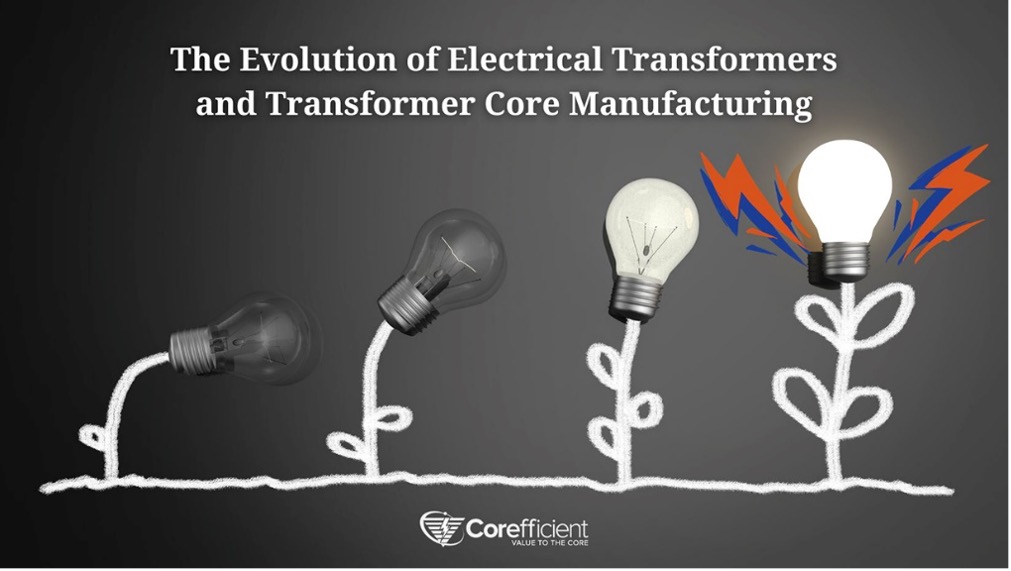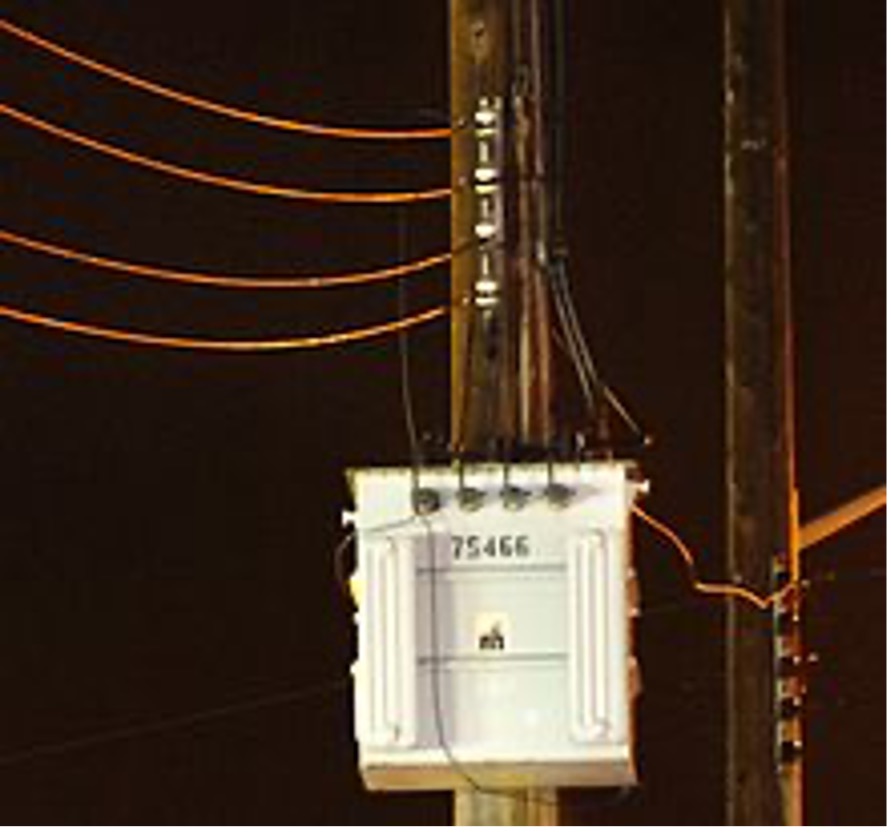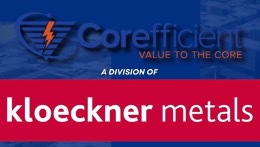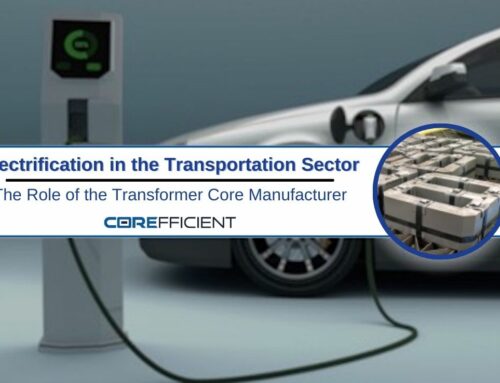
Electricity is essential for powering our homes, businesses, and communities, making it a vital part of our daily lives. But have you ever wondered how it all works? Let Corefficient walk you through the evolution of electrical transformers and transformer core manufacturing.
To start, a critical piece of the puzzle is the electrical transformer. This remarkable device plays a crucial role in guaranteeing the safety and reliability of the electricity we rely on. It accomplishes this by modulating the strength of the electrical current, simplifying and optimizing the distribution of electricity to its intended destinations. Through this process, electrical transformers ensure that our electrical infrastructure remains balanced and steadfast, ensuring a consistent power supply whenever we require it.
So, the next time you turn on your lights or charge your phone, remember that it’s all thanks to the vital work of electrical transformers!
A Quick History of Electrical Transformers: From the ZBD Transformer to Today’s High-Efficiency Designs
In 1884, Ottó Bláthy, Miksa Déri, and Károly Zipernowsky, hailing from the Austro-Hungarian Empire, pioneered a transformer featuring a laminated iron core. This innovation notably curtailed eddy currents and losses, rendering transformers more efficient and potent.
Five years later, in 1889, Russian engineer Mikhail Dolivo-Dobrovolsky introduced the first three-phase transformer. This type has since become the preferred choice in most modern power systems, thanks to its superior efficiency over single-phase transformers.

Image Attribution: https://en.wikipedia.org/wiki/Three-phase_electric_power
Advancements in transformer technology persisted into the early 1900s, with the advent of materials like silicon steel for the core. These materials boasted reduced losses and facilitated the creation of more compact and efficient transformers.
The mid-20th century witnessed a transformative shift with the integration of computer-aided design (CAD) and computer-aided manufacturing (CAM). This brought about significant enhancements in transformer performance as well as in transformer core manufacturing.
Today, transformers find applications in diverse fields, encompassing power transmission, distribution, and conversion. Furthermore, they are integral components in numerous electronic devices, such as power supplies, motors, and generators.
Unlocking the Power of Electrical Transformers: A Comprehensive Guide
Electrical transformers have come a long way since their invention in the late 1800s. These devices transfer electrical energy through electromagnetic induction from one circuit to another, becoming essential components in modern power systems. However, as with any technology, developing and improving electrical transformers has been continuous.
Do you know what makes up an electrical transformer? Well, let me tell you, its main components are:
Windings: Comprised of wire coils wrapped around the core, these play a crucial role in transformers. The primary winding is responsible for interfacing with the voltage input source, while the secondary winding connects to the output voltage load. The transformer’s voltage ratio depends on the number of turns in both the primary and secondary windings.
Insulation: The insulation separates the windings and core. It is made of a material with high dielectric strength, such as paper, mica, or epoxy.
Tank: The protective enclosure, often referred to as the tank, safeguards the core and windings from environmental factors like moisture and corrosion. Typically constructed from materials like steel or cast iron, it ensures the transformer’s longevity.
Cooling system: Efficient operation is maintained through a cooling system, which can be as straightforward as an air-cooled setup or more intricate, like an oil-cooled system, to dissipate heat effectively.
Bushings: The bushings serve as connectors that link the windings to the external world. They are made of a material resistant to high voltage, such as porcelain or glass.
Terminals: Finally, the points where the device’s windings connect to the outside world are known as terminals. They are typically made from corrosion-resistant materials like copper or aluminum.
Let’s talk about the fascinating electrical transformer core. This vital component is responsible for transferring energy from one coil to another by creating a magnetic field. They are usually constructed from laminated steel sheets that have been stacked and wound around the transformer’s coils, among many other parts.

Transformer core manufacturing has also evolved.
Over the years, transformer core manufacturing has evolved significantly. Early transformer cores were made of solid iron bars, which were expensive and inefficient. As the demand for electricity increased, manufacturers began using thin laminated iron sheets to make the cores. These laminated sheets reduced the energy lost to heat, making transformers more efficient.
Nowadays, transformer cores are made using advanced manufacturing techniques that allow for even greater efficiency. The latest energy-efficient transformer cores are designed to reduce energy loss by minimizing the amount of power wasted as heat. These new transformer cores are made of materials like amorphous metal and nanocrystalline alloy, which have magnetic properties that make them ideal for use in transformers.
Hold on, there’s even more about transformer core manufacturing!
Looking for high-performing and energy-efficient transformer cores? Corefficient has got you covered. Their advanced technology optimizes their transformer core manufacturing process for minimal energy loss.
Corefficient offers a range of energy-efficient transformer cores, including the GEORG brand TBA lines. To meet demand, they use high-speed automated precision cutting and stacking to produce their cores, frames, and source materials like CRGO, HiNB, and laser scribed. They also specialize in efficient wound cores built to customer specifications on TRANCO and AEM Unicore machines.

As a manufacturer and supplier of transformer cores, Corefficient offers in-house sourcing and finished core supply. Their proprietary design and services have made them a leading manufacturer in the industry. They invest in modern annealing furnaces to ensure performance and have an on-site paint booth to meet customer needs. Additionally, they have a quality control lab to test raw materials and finished cores, and they can provide reports upon request.
So, if you’re in the market for electrical transformers or energy-efficient transformer cores, watch out for the latest advancements in transformer core technology. With the help of experts like Corefficient, you can find the suitable transformer core for your needs and take advantage of the latest innovations in the industry. Don’t wait, upgrade your system today!
About Corefficient:
Corefficient understands the challenges of complying with new transformer efficiency regulations and meeting the market’s demands. They are committed to delivering exceptional performance in transformer cores while maintaining customer confidentiality. Additionally, they aim for excellence with an experienced team in modern facilities and a sustainable supply chain. Furthermore, they are fully certified to ensure the highest quality. At Corefficient, their goal is to create value for their customers, not just make and sell cores.
Call 1 (704) 236-2510 to immediately contact Corefficient’s North American sales engineer!






